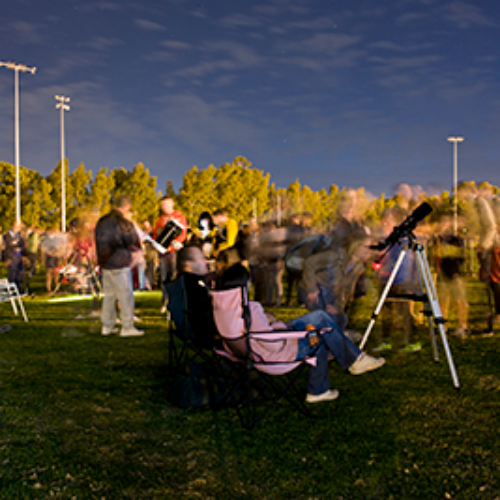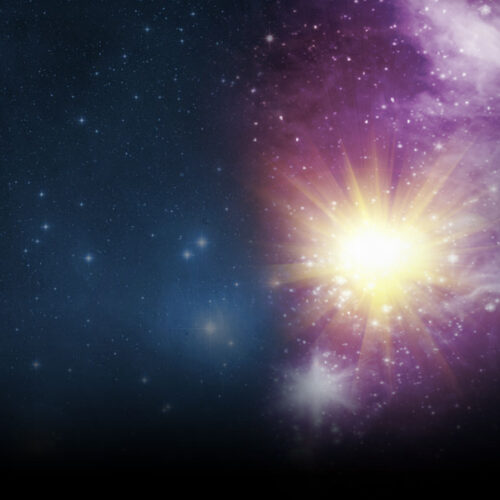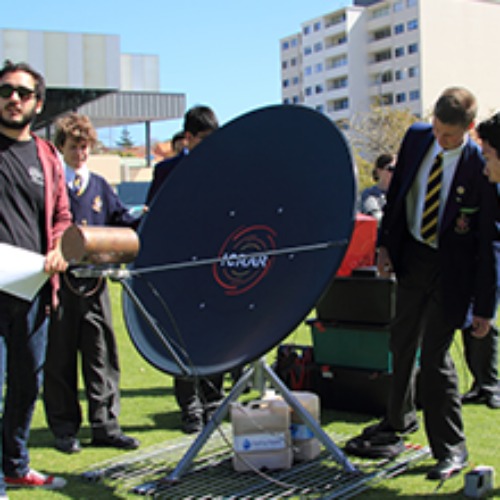The SPIRIT initiative allows schools to access the same tools used by researchers and astronomers to observe and collect astronomical data. Students can access and remotely control the four current SPIRIT robotic telescopes in real time to take images of distant astronomical objects, as well as schedule automated data acquisition as part of more sophisticated research projects.
SPIRIT 1 was officially launched by Hon. Dr Elizabeth Constable, WA Minister for Education on 24 September 2010 with SPIRIT 2 commissioned in early 2012.
Additional SPIRIT Telescopes have appeared in recent years thanks to generous donations. ICRAR’s Mardella Observatory currently hosts 4 SPIRIT telescopes, including a 1 metre telescope commissioned in 2021.
Real science
As one of the last areas of science where amateurs can make new discoveries, the SPIRIT initiative provides students the means to undertake astronomy research and the opportunity to make genuine scientific contributions.
SPIRIT is hosted by ICRAR and is supported by a full life-cycle of learning opportunities and student activities.
TECHNICAL DESCRIPTION
The SPIRIT telescopes and observatories have evolved over the past decade, and are now permanently located at Mardella, south of Perth.
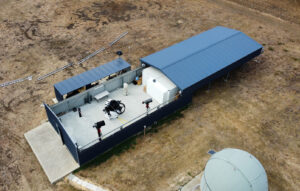
Mardella Observatory
The observatory currently hosts a 1 metre telescope (SPIRIT 6) and three smaller telescopes (SPIRIT 2, SPIRIT 3 & SPIRIT 4).
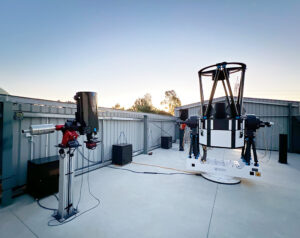
SPIRIT 4 at left, SPIRIT 6 at right and SPIRIT 2 in the background.
The original SPIRIT 1 telescope is no longer in operation, though there are plans to replace it in the future.
| SPIRIT 2 | SPIRIT 3 | SPIRIT 4 | SPIRIT 6 | |
| Brand and model | Corrected Dell-Kirkham manufactured by Planewave instruments | Corrected Dell-Kirkham manufactured by Planewave instruments | Corrected Dell-Kirkham manufactured by Planewave instruments | Planewave CDK-100 |
| Size | 43cm | 32cm | 32cm | 1m |
| Imaging Camera | Fingerlakes Instruments Proline PL16801 | FLI Proline 16803 | SBIG STX-16803 | Fingerlakes Instruments Kepler KAF-4320 CCD |
| Field of View | 40 arcminutes | 50 arcminutes | 50 arcminutes | 28 arcminutes |
| Default resolution | 0.63 arcseconds per pixel | 0.7 arcseconds per pixel | 0.7 arcseconds per pixel | 0.83 arcseconds per pixel |
All SPIRIT cameras incorporate thermoelectrically cooled camera housings and non anti-blooming (NABG) CCD sensors (except SPIRIT 3 and 4 which utilises an anti-blooming CCD).
All cameras include filterwheels containing a variety of photographic and photometric filters.
Accurate target positioning and tracking with the smaller SPIRIT telescopes is achieved using the Paramount robotic telescope mount utilising advanced periodic error correction, pointing and tracking algorithms. As a consequence, the instruments do not use auto-guiders. Limiting magnitude is constrained by varying sky conditions, with a practical exposure limit of 300 seconds. Even so, astrometric observations of minor planets approaching magnitude 19.5 are routinely undertaken with even the smaller SPIRIT telescopes using ‘stacking’ techniques.
SPIRIT 6 is a Alt/Az mounted telescope and utilises the very latest state-of-the-art direct drive technology from Planewave Instruments.
The automated roll-off observatory at Mardella includes full automated weather monitoring.
Daily telescope functioning includes highly automated ‘dusk until dawn’ operations. Year-round remote access to the telescopes is provided 7 days a week (weather dependent) excluding maintenance periods and staff leave.
All daily operations have been fully automated including CCD Camera initialisation (cooling), pre-dusk roof opening and pre-dawn shutdown procedures.
Flat field frames are acquired automatically at dusk (weather dependent) using pre-defined positions and timing through all filters with bin modes dependent on the telescope. Fresh bias and dark frames are also acquired each night. Master calibration frames are created from several sub frames to ensure high quality image calibration for both scientific and astrophotographic applications. Images are calibrated automatically as part of the acquisition process.
Using SPIRIT
SPIRIT telescopes are accessed by students and teachers using a web-enabled interface. Imaging commences at the end of astronomical twilight, nominally a sun angle of -12°.
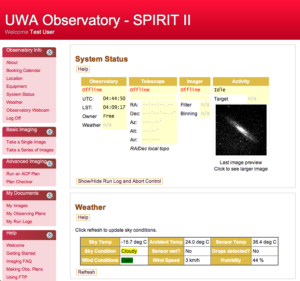
Differing modes of operation provide a number ways to use the SPIRIT telescopes. Users can operate SPIRIT 2 in real time and take single images or series of images through various filters, examining exposures as they are acquired. More advanced users can upload a list of targets created using an application called ACP Planner, so that images can be acquired unattended. ACP plans make use of simple but powerful scripting, allowing advanced users to create and modify automated imaging plans using a text editor of their choice. This advanced mode of operation is suited to survey work or large data collection scenaria, where it is not feasible to monitor operations for extended periods or an entire night. SPIRIT 4 and 6 operate in scheduled mode, with users requesting images and monitoring operations via the same web-based interface used for SPIRIT 2.
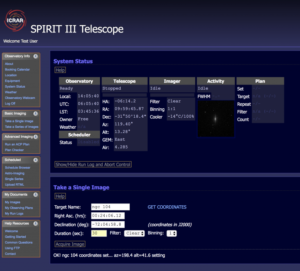
The web interface includes access to catalogue databases for Messier, NGC, PGC and IC objects as well as the major planets by name. This permits novice users to specify targets without knowledge of the celestial coordinates system. In a similar way, minor planet ephemerides are calculated by the system at the time of imaging for numbered minor planets. Celestial coordinates can be specified in the interface for all other targets.
Each image is provided in two formats to cater for a wide range of requirements:
- a fully calibrated FITS image;
- a high resolution JPEG image.
Images and log files can be accessed and downloaded directly using FTP.
Access to SPIRIT is provided free to authorised teachers, students and researchers according to the information and processes provided elsewhere on this web site. The SPIRIT initiative incorporates a full life-cycle of teacher and student professional learning opportunities and activities delivered via the outreach program at the International Centre for Radio Astronomy Research.
Need more information?
Access to SPIRIT is provided free to authorised teachers, students and researchers according to the information and processes provided elsewhere on this web site. The SPIRIT initiative incorporates a full life-cycle of teacher and student professional learning opportunities and activities delivered via the outreach program at the International Centre for Radio Astronomy Research. Contact us below for further information.
Information about teacher and student workshops can be found here.
